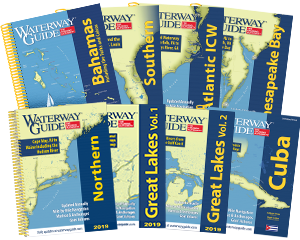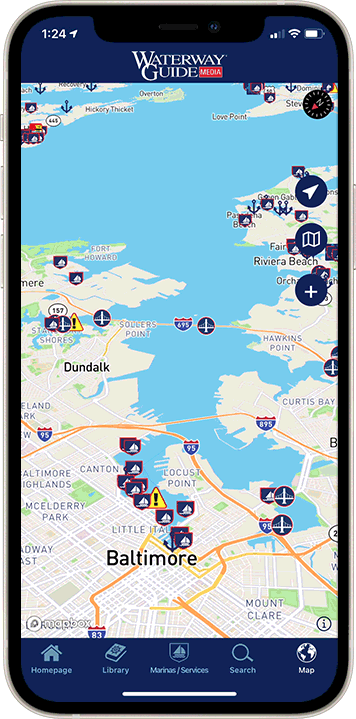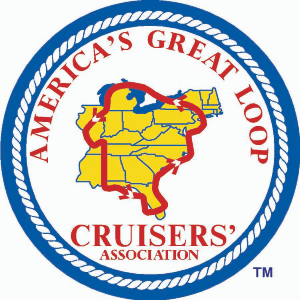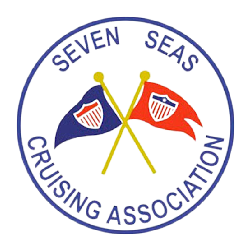Explore Our Latest News & Articles
The Gulf Stream is one of the most powerful natural forces on the planet. This massive river of warm water flows north, out of the Caribbean basin, past Florida and Cape Hatteras. It is the primary factor for giving most of Northern Europe relatively moderate weather. It creates storms of unimaginable power that form the "Graveyard of the Atlantic" off Cape Hatteras and can rapidly intensify hurricanes approaching the coast.
While Juan Ponce de Leon first documented the strong current, it was Benjamin Franklin who first charted the Gulf Stream. By creating an accurate chart of the current, days could be saved by ships that sailed the commercial routes between America and Europe.
The Straits of Florida is that narrow part of the Gulf Stream that separates the Florida peninsula from the Island of The Bahamas. Between Fort Lauderdale and The Bahamas, where the current is the strongest, it can reach speeds of up to 5 knots. It is predictable in that it will be there but the precise location and speed of the Gulf Stream changes slightly from day to day.
Top Tips
- Never depart on a Gulf Stream crossing with winds forecast to come from any northerly direction. North winds cause steep, dangerous seas against the strong northbound current.
- Unless you're a "salty sailor," it's best to avoid crossings with any winds forecast more than 15 knots. This is a rough rule of thumb but most people prefer the calmest conditions they can get on the Gulf Stream.
- Use the Gulf Stream's power to your maximum advantage. The farther south you depart Florida, the better. Unless you drive a fast vessel, never try to fight the current by departing a destination that is north of your arrival point. If this is your plan, navigate close to the shoreline of Florida southbound and then cross for your destination.
- The Gulf Stream is one of the busiest shipping channels you will find. For vessels traveling from the Panama Canal to the east coast of the US or Europe, the Gulf Stream offers significant fuel savings and time shaved off their trip. Realize that the powerful current means that a vessel's heading is not closely related to its Course Over Ground (COG). Your ground track shown on your GPS will be different from your heading by as much as 30º. Track targets carefully and give crossing vessels and even wider berth than you usually do.
- Do not simply set your GPS and follow the "magenta line." Plan your trip before you depart. The tactic you choose for countering the Gulf Stream's current will depend on your vessel's speed. A GPS direct course will cause you to make continuous course corrections as the current increases. For slower boats, you will wind up making very little forward speed at the point of maximum current and wallowing in the middle of the Gulf Stream for hours. Instead, plot a "constant heading" course to your destination by calculating set and drift. Your course over the ground will be slightly longer and oddly S-shaped, but you will maintain a constant speed and heading. This is very helpful to sailors who can then maintain a constant apparent wind angle.
General Strategies for Crossing the Stream
For vessels crossing between the Florida east coast and Bahamas, the Gulf Stream is the principal navigational consideration. It is a wide, deep and warm river of fast-moving water flowing north, where the wind profoundly influences sea conditions. The stream is ever changing, and it is difficult and unnecessary to plot its path and speed precisely. It is more important to pick a good weather window, than it is to compensate for drift and set. An extra couple of hours in settled conditions will be insignificant when compared to plotting the shortest trip in bad conditions.
The Gulf Stream current generally begins a few miles out from the Florida coast and extends for approximately 43 nm eastward. The current will gradually increase as you travel east, reaching a maximum of roughly 3.6 knots about 8 to 11 miles from the western wall. The current gradually subsides to little or no current at the eastern edge of the Gulf Stream.
The average northerly speed over the 43-mile width is 2.5 knots while the average direction of flow is 1º True when north of Lake Worth Inlet and about 2º True south of the inlet. The sea state in the Gulf Stream is mostly a function of the prevailing ocean swell in the area combined with local wind-generated waves.
The National Weather Service marine forecast provides the Significant Wave Height expected for the Stream; that is, the average height of the highest one-third of the combined swells and wind waves. Be sure to check this when planning your departure.
For a useful rule of thumb, south to southeast winds at 10 knots will develop 2-foot seas; 15 knots, 4- to 5-foot seas; 20 knots, 7-foot seas; and 25 knots, 9-foot seas. For most cruising boats it is generally not advisable to cross the Gulf Stream in winds higher than 15 knots. And it is never a great idea to cross in winds with any significant northerly component as winds against the current cause a very steep, choppy sea. Winds of 10 knots or less offer a relatively comfortable ride for the typical semi-displacement recreational boat of 35 to 45 feet in length, provided there are no significant swells in addition to the wind waves.
In winter the location of the Gulf Stream will sometimes be marked by mist rising from its warm waters, which is significantly warmer than the colder coastal water. In winter too, and whenever a northerly wind is blowing, the horizon looking toward the Gulf Stream will often look jagged or saw-toothed. Sailors observing from inshore say there are "elephants" out there. These are the giant square-topped waves kicked up by the Gulf Stream's determination to win its way north against the wind.
In bright sunlight, the Gulf Stream is a deep cobalt blue and, if the sun is right, you may see light dancing in its depths. You will usually see blond-colored patches of Sargasso weed drifting in its waters. Fish will often congregate near and under these patches. You can be sure you have entered the Gulf Stream when the water temperature noticeably increases over a short distance from the near-shore ocean temperature. If you are navigating using GPS, you will likely see the effects of the current quickly as your course and speed over ground will change significantly.
Forecasting the Position of the Stream
There are a few resources that can help you plot the actual position of the Gulf Stream. If you are making a day hop from Florida or back, this is of little importance. But if you are planning longer passages to North Florida or the Carolinas, knowing when to "hop into" and "hop out of" the Gulf Stream can be very beneficial.The U.S. Navy and NOAA publish daily Gulf Stream analysis charts for planning purposes. Other commercial providers such as Passage Weather, Windy and PredictWind also predict ocean currents for users. Gulf Stream location can usually be inferred from sea temperature charts (look for the band of warm water). If you subscribe to Chris Parker's weather service, he can and will provide detailed coordinates on where vessels can best enter and exit the Gulf Stream. His data will be based on current forecasts and the expected conditions en route.












